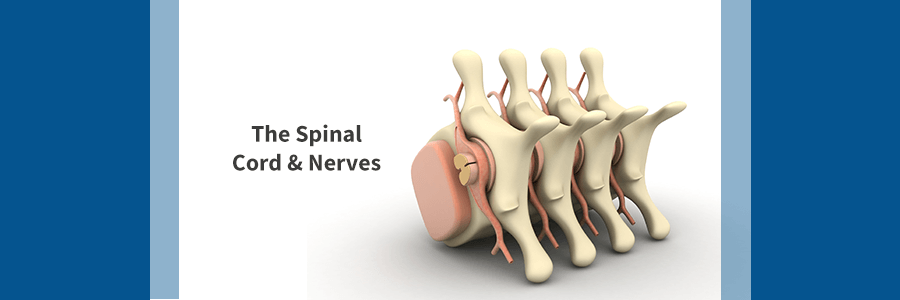Life After a Spinal Cord Injury (SCI)

Each year, over 10,000 people in the United States suffer from a spinal cord injury (SCI). Tackling the reality of a life interrupted by such a catastrophe is daunting, to say the least. Additionally, the spine is a complex structure in the nervous system, meaning that there are a myriad of ways in which spinal cord injuries can manifest. Though it might seem intimidating, do not hesitate to expand your knowledge of the spinal cord, as doing so will allow you to better serve your needs. Moreover, a quick overview of spinal cord anatomy will enable you to communicate and discuss your symptoms with your doctor.
The Structure of the Spine
Medical experts most often divide the spinal cord into four different regions: cervical, thoracic, lumbar, and sacral. Understanding exactly where your spine is compromised is one of the first steps in understanding your prognosis and treatment options.
Before we break it down, it is important to understand that the numbers which denote vertebral position descend from lowest to highest. This means that the lowest numbers (e.g. C1) are located higher on the spinal column than bigger numbers (e.g. C8). Spinal cord injury levels include:
- Cervical: The top end of the spine, otherwise known as the neck. This region breaks down into a series of eight vertebrae (C1-C8).
- Thoracic: The next lowest region, the thoracic spine, is located in the middle of your back. It is made up of twelve vertebrae (T1-T12).
- Lumbar: The region beneath the thoracic, commonly referred to as the lower back. If you look at a picture of the spine, you’ll notice that this is where the spine begins to curve. This region consists of five vertebrae (L1-L5).
- Sacral: The lowest of the four commonly cited regions, the sacral spine is where the spine begins to triangulate in shape. Unlike the lumbar region, which bends inward, this portion of the spine bends somewhat outward. Instead of numbered vertebrae, this region consists of nerve roots which exit the spine at different levels.
It is important to note that an additional region, the coccygeal region, is sometimes cited as well. This is otherwise known as the tailbone, with a single vertebra located at the bottom end of the spinal column.

Spinal Cord Injury Categories
Spinal cord injuries are always categorized into one of two general groups: complete or incomplete.
- Complete Injury: The more serious of the two categories, complete injuries occur when the spinal cord severs entirely. In such cases, function completely diminishes to nothing and may only return with regular treatment and physical therapy. In some cases, however, even that is not enough to completely treat the loss of function.
- Incomplete Injury: As you may expect, incomplete injuries are the exactly as they sound. In this instance, the spinal cord severs only partially. This causes the patient to experience spinal stenosis symptoms, such as partial numbness and tingling in the limbs. Unlike with complete injuries, the patient usually retains some form of limited function. Of course, the severity and nature of this limitation depend heavily on a case-by-case basis.
Incomplete injuries are the more common of the two, accounting for more than 60% of spinal cord injuries. This is likely due to a better understanding and increased knowledge surrounding spinal injury treatment and response.
Common Incomplete Spinal Cord Injuries
Additionally, doctors often break down incomplete spinal cord injuries into the following categories:
- Cauda Equina Lesion: Also known as nerve compression syndrome, this injury results in damage between the first and second lumbar areas of the spine. Most commonly, this results in a loss of sensation, however, movement is not usually impaired. In some cases, it may be possible to treat the damaged nerves and improve their function.
- Brown-Sequard Syndrome: The way this injury manifests depends highly on the individual case, as it occurs when damage is sustained to one side of the spine. Because of this, symptoms may appear more pronounced on one side of the body than the other. This may lead to impaired movement on the right side of the body, but full normal function on the left or vice versa.
- Anterior Cord Syndrome: As suggested by the name, this injury affects the frontal region of the spinal cord. Anterior cord syndrome damages the motor and sensory pathways of the spine. This results in difficulty moving as well as some loss of sensation.
- Central Cord Syndrome: The name of this condition is also indicative of its nature, as it occurs at the center of the spinal cord. With Central Cord Syndrome, the injury involves damage to nerves that carry signals from the brain to the central spinal cord. Loss of motor skills and paralysis of the arms are common with this type of injury. Partial impairment of the legs is also common, though it is usually less pronounced. Less commonly, some patients may suffer from loss of bladder/bowel control or the loss of sexual function.
Again, knowing the location of your injury will help you to better understand your situation and to intelligently communicate with your doctor. In addition to this, make sure to ask questions concerning whether your injury is complete or incomplete.

Common Complete Spinal Cord Injuries
Likewise, if you have been diagnosed with a complete spinal cord injury, you may hear your doctor refer to the following terms that denote various degrees of limb paralysis:
- Quadriplegia: Also known as tetraplegia, quadriplegia is the result of an injury to the cervical spinal cord or neck. This is one of the most severe complete spinal injuries, resulting in the paralysis of all limbs. The severity of the paralysis, however, will depend on a case-by-case basis. Because this injury eliminates movement below the injury site, additional functions may also be affected. This includes bladder/bowel control, breathing, and possibly more depending on the severity of the injury. Typically, the higher the injury is, the worse the quadriplegia will be.
- Paraplegia: Paraplegia is essentially quadriplegia, but it affects fewer areas. The injury instead results in the removal of sensation and movement in the lower half of the body. Most commonly, this injury is the result of damage to the thoracic region of the spine.
Symptoms of Spinal Cord Injuries (SCI)
Spinal cord injuries are not exactly subtle. They often result from obvious causes, such as a sudden, traumatic event. For example, car accidents, which can cause anterolisthesis (or forward slippage of a vertebra), constitute the main cause of SCIs. Other common causes include sports injuries, acts of violence such as gunshot wounds, and falls—all of which can lead to a broken back.
Symptoms alone are not enough to identify the exact injury that you have, but you will certainly know that your spinal cord has been damaged.
Symptoms for spinal cord injuries vary far and wide, but here is a list of some common ones:
- Paralysis in one or more parts of the body (varying in severity)
- Hyperkyphosis, or an abnormal forward curving of the thoracic spine
- Trouble with respiration
- Loss of bladder & bowel control
- Chronic pain (muscle and nerve)
- Headaches
- Loss of sexual function
- Changes in personality and mental health (depression and anxiety)
- Bouts of pneumonia
Again, it is important to remember that this is only a small, general list. You may experience most of these symptoms or virtually none of them at all. It all depends heavily on the exact nature of your injury.

Spinal Cord Injury Treatment
One of the most important aspects of treating a spinal cord injury is making sure that you limit your movement. Remaining still, limiting spinal column movement, and proper medical care all help solidify a better prognosis for your case.
For immediate treatment of the injury itself, doctors will first focus on stabilizing your condition. This may involve a respirator, a neck brace, blood transfusions, and whatever else is necessary to treat the immediate symptoms.
Because spinal cord injuries vary wildly from case to case, the treatment naturally varies as well. Collaborate with your doctor to design a detailed care plan tailored to meet your specific needs. Treatment for spinal cord injuries may include:

- You may require respirators or feeding tubes in cases where breathing and eating have become limited.
- Your doctor may recommend physical therapy and rehabilitation to aid in regaining function. Many people with spinal cord injuries regain some degree of function over time with this treatment option.
- Spinal stenosis surgery may be an option in some cases, but it is not always necessary. Discuss this with your doctor.
- Counseling and therapy may help the patient cope with the pain and stress of having a debilitating, life-altering injury.
- For other issues such as pain and insomnia, your doctor may prescribe medication to help alleviate symptoms.
If you think that you may have a spinal cord injury, then seek immediate medical attention. For an individualized health care plan to treat your injury, consult with Dr. Daveed Frazier, New York City Spine’s Harvard-trained back specialist. Working with a team of highly skilled back experts, Dr. Daveed Frazier will work with you to find the best treatments for your specific injury.
